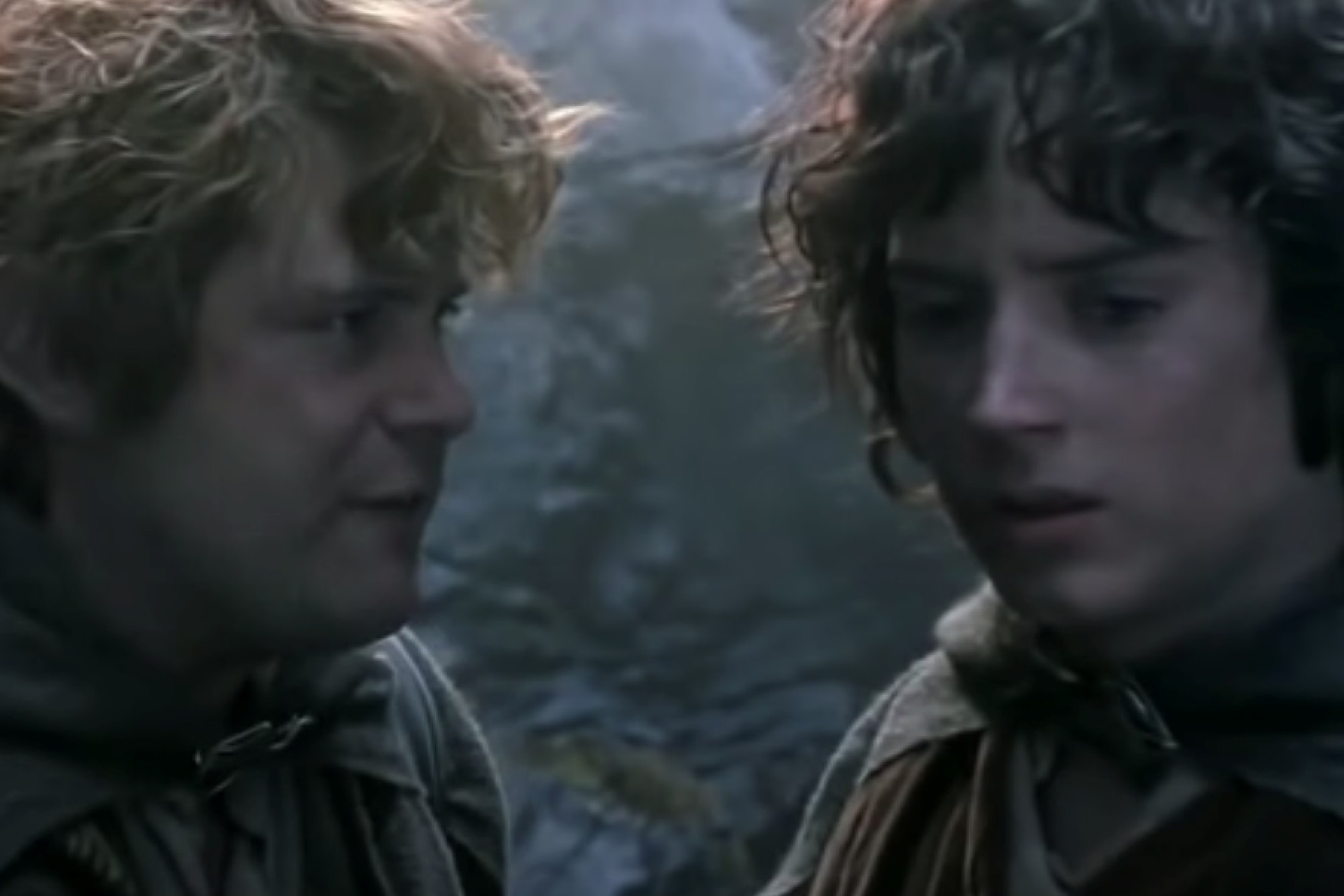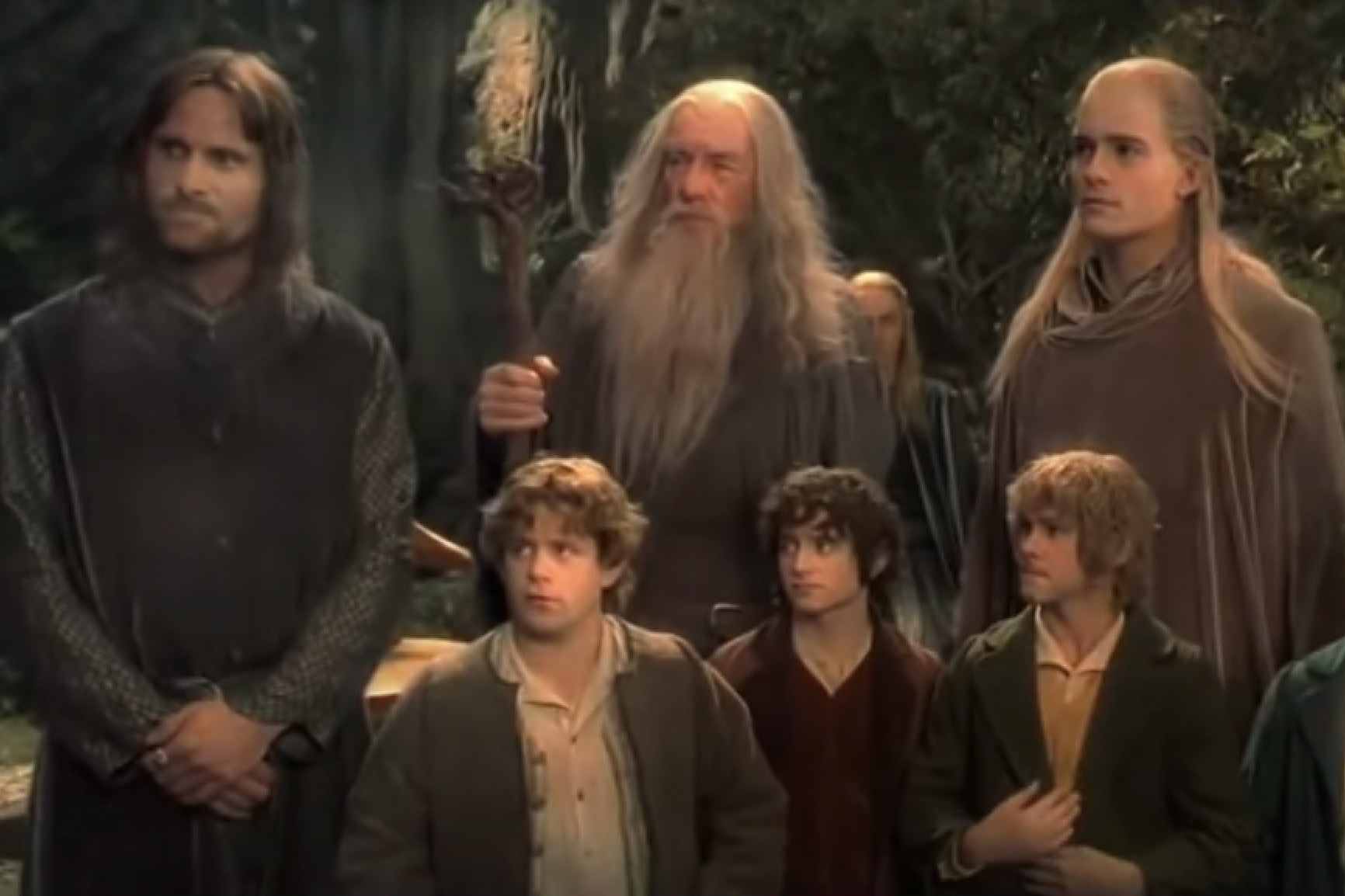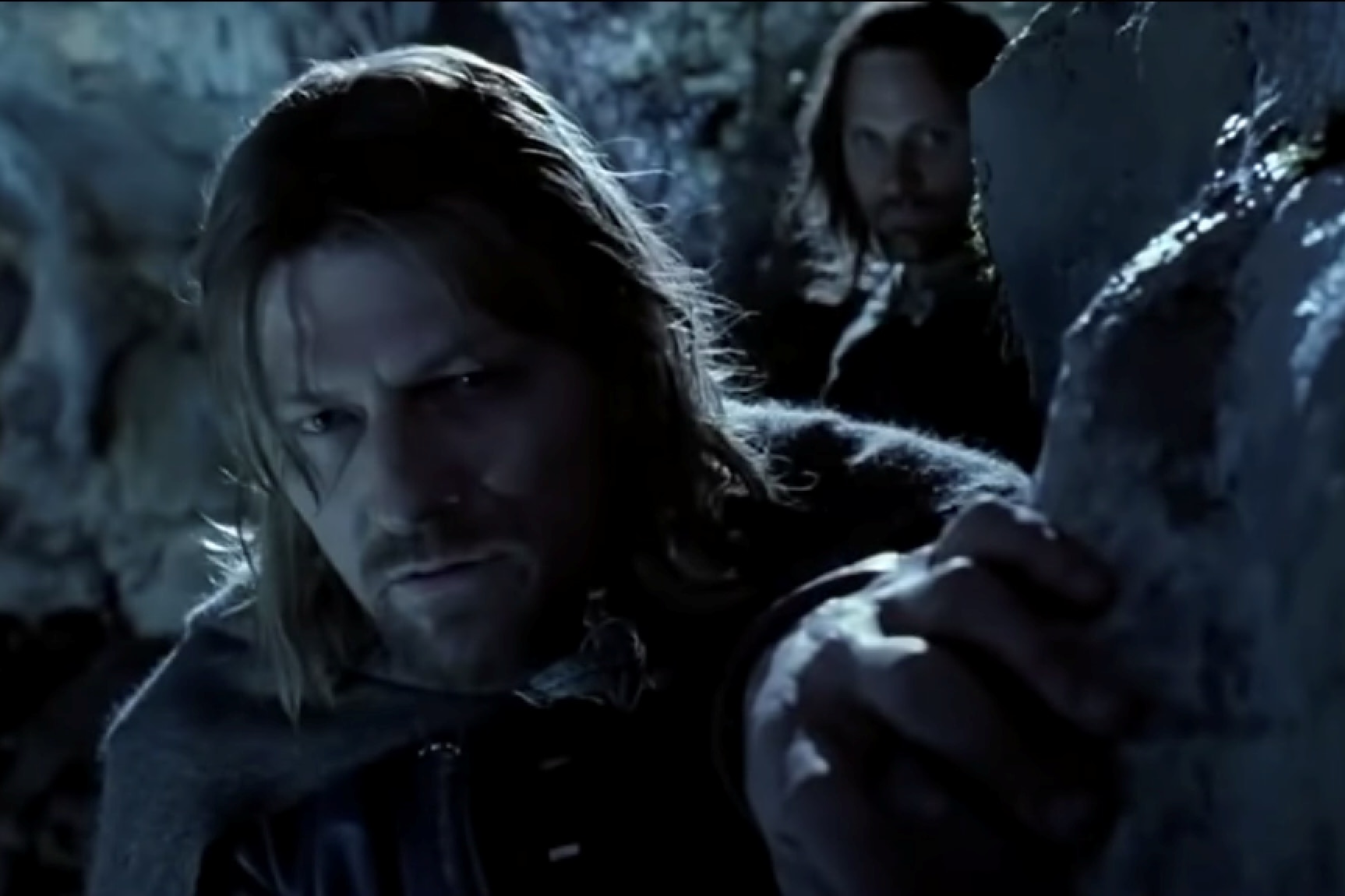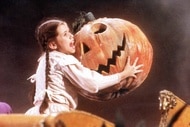Create a free profile to get unlimited access to exclusive videos, sweepstakes, and more!
Why queer readings of The Lord of the Rings are so popular — and important

For as long as there has been literature, there have been queer readings and interpretations of iconic fictional characters. The Lord of the Rings’ plethora of close-knit male friendships made the classic book series rife for potential queer readings among eagle-eyed fans — there just wasn’t any internet or an easy way for a community to talk about these interpretations. For years, Sam and Frodo’s affectionate relationship was one of literature’s most devoted (but not always acknowledged) ships. With the debut of The Lord of the Rings films, Hollywood brought a crucial piece of queer-coded literature to the big screen, whether it was intentional or not. Not only did The Lord of the Rings bring Sam/Frodo, Gimli/Legolas, and a gaggle of other slash ships to the attention of mainstream audiences — it also created one of the most passionate and fan communities on the internet, one that’s alive and well today.
It’s difficult to discern the exact roots of where Sam and Frodo as a ship truly began, because unlike so many of the most popular slash ships today, Sam/Frodo predates the existence of the internet itself. It even precedes the popular fanzines that popped up when Kirk/Spock was finding its footing. The Lord of the Rings was published all the way back in 1954, meaning that there’s virtually no way to gauge the temperature of queer fan readings of the books when they were first published, but there’s no question as to whether or not there was material for queer fans to latch on to. The books are incredibly in-depth about the closeness of Sam and Frodo’s relationship. Their bond is incredibly tender and profound. And, we know from, of all people, Sir Ian McKellen, that queer fans of the books very much picked up on the Sam/Frodo relationship.
In The Lord of the Rings: The Fellowship of the Ring's cast commentary, Ian McKellen, a gay icon in his own right who played Gandalf the Grey, revealed that he was responsible for the inclusion of a small but crucial moment between Sam (Sean Astin) and Frodo (Elijah Wood) that featured in the books but might not have made it into the films without his suggestion. When Frodo reunites with Sam at the end of The Fellowship of the Ring, Sam takes Frodo’s hand in a small, intimate moment, which McKellen worried may be lost on two straight actors."When I suggested to Sean that he take Elijah's hand,” McKellen explains, “it was because I thought that [it] might be missed by two resolutely heterosexual actors who might not appreciate that gay people, like myself, saw in a touch something, perhaps, more meaningful than others might."
McKellen’s suggestion exemplifies how The Lord of the Rings so successfully carved a niche for itself as a part of queer fandom, and why LGBTQ+ fans are so drawn to the Sam/Frodo relationship in the books: Though Tolkien himself likely didn’t intend to code the relationship as gay, the sheer tenderness of the language and the constant affection between the two speaks to a kind of intimacy that queer fans are able to recognize and resonate with. While the books undeniably laid the groundwork for The Lord of the Rings as a key part of queer fandom, though, it was Peter Jackson’s films that truly put Sam and Frodo as a ship on the map.
Despite the books being a significant presence in pop culture for nearly 50 years, it wasn’t until the release of The Lord of the Rings: The Fellowship of the Ring in 2001 that a new, internet-savvy generation of fans was introduced to Sam, Frodo, Legolas, Gimli, Boromir, Aragorn, and the rest of the series’ many queer ships for the first time. Unlike the books’ initial release, however, fandom culture was entering a heyday — with fanwork sites popping up all over the place that allowed for LGBTQ+ fans to connect with each other and share their devotion for Sam/Frodo in a previously unheard of manner, and one that truly moved The Lord of the Rings from classic fantasy novels to classic fantasy novels that also serve as a critical part of early online shipping culture. Fans took the films and ran with them, establishing one of the most active and vigorous fanbases out there, and one that’s still alive and well to this day. Multiple new works of fanfiction are uploaded to fic aggregate site AO3 every day — a testament to the power of a good queer-coded relationship.
But why? Why are queer audiences so drawn to The Lord of the Rings that Ian McKellen would go out of his way to ensure that crucial moments from the books translate to the films for LGBTQ+ fans? Above all else, the draw for Sam/Frodo and the majority of the other slash Lord of the Rings ships is the sheer tenderness of their relationships, and the willingness to portray male leads as anything other than hyper-macho uber-masculine leading men. It’s almost an unspoken rule for big Hollywood blockbuster that a leading man should be a huge, buff, masculine leader — cool under pressure, more than capable in hand to hand combat, and a solid, frequently lone-wolf type figure — someone who never falters and certainly never shows signs of softness of vulnerability. It was true in the early days of the blockbuster in the 1980s, as evidenced by stars like Bruce Willis and Arnold Schwarzenegger, and it’s true today, as evidenced by the entirety of the Marvel Cinematic Universe.
Then there’s Frodo Baggins. With his cherubic features, demure mannerisms, and soft-spoken demeanor, he’s practically the antithesis of what we think of when we hear “blockbuster leading man.” Though he’s not even canonically queer, his sheer existence as a nonconformist male lead led queer fans to latch onto him as a more accessible, relatable protagonist. Then, of course, there’s Sam, his fearless, devoted companion who stays by his side through everything, but who also never resists the opportunity to show his affection and care for Frodo in the smallest, most intimate ways.
This is a drastic and refreshing departure from the ideas surrounding masculinity that still pervade blockbuster action to this day. In Frodo, Sam, and the rest of the close-knit Lord of the Rings characters, audiences are shown that it’s OK to rely on others, to externalize your feelings, and to show affection, even to other men. Where most blockbuster heroes save the day through feats of will, strength in combat, or other brute-force approaches, Frodo finds strength not in standing alone, but because he had the love and support of those like Sam to encourage him, love him, and set him on the right path.
It’s that willingness to showcase gentle intimacy between men that made The Lord of the Rings the queer mecca that it is for fans today — even with more traditionally masculine characters like Gimli, Aragorn, or Boromir, there’s never a hesitation to express affection or care for their fellow brothers in arms. For LGBTQ+ audiences that are practically devoid of representation in mainstream action, this softness and gentle care is the closest to queer representation that they could get — especially in the case of Sam and Frodo, it’s a relationship so sweet and affectionate that a queer reading is hardly a reach.
Between source material rife with shipping potential, a close-knit cast full of actors actively advocating for the inclusion of more slash-centric moments, and the advent of the internet laying the groundwork for an active, passionate community of fans, The Lord of the Rings films helped transform a series of classic novels into a franchise beloved by LGBTQ+ fans and cherished for the sheer volume of queer-coded moments among its many, many pages. Whether it’s Sam and Frodo, Gimli and Legolas, or even Thorin and Bilbo, The Lord of the Rings remains one of the most significant presences in slash-shipping there is — all thanks to a willingness to showcase the beauty of tender male friendships and nontraditional masculinity.




























